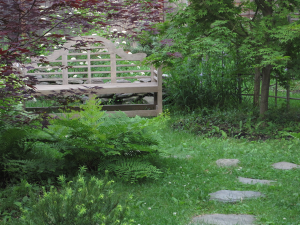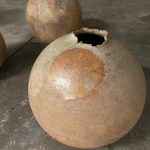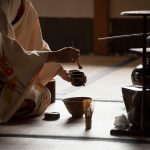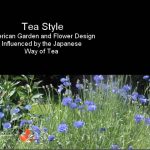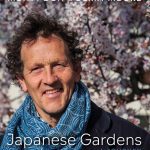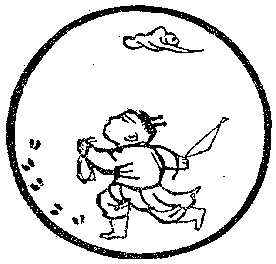This bench is designed by the English architect Edwin Lutyens who was a colleague of the famous garden designer Gertrude Jekyll. They created the English County Garden style in the late 1800″s. The bench fits well with my farm house from the same era and shows that one can have elements in a tea garden that are not strictly Japanese.
There are two important structures or elements that define a
The guests follow a path to the bench. The host will come out of the tea house, and greet them by pouring fresh water into the basin. He then bows to the guests at the gate and returns to the tea room. The guests, one by one, will go to the water basin, rinse their hands and mouth and proceed into the tea room.
In Japan, the waiting bench is usually a covered structure but here in Tivoli I have chosen a bench that reflects the architecture of my house and gives the garden a natural feel rather than a strictly Japanese design.
Tea as an art form follows rules, but is also flexible and creative. I can design the elements of the garden such as the bench, water basin, fences, gates and paths to my own taste yet follow the fundamental principles.
excerpt from A Tea Garden in Tivoli


